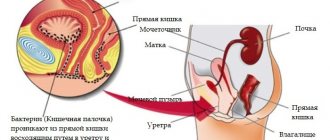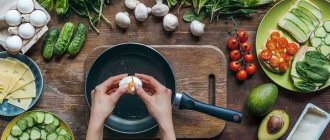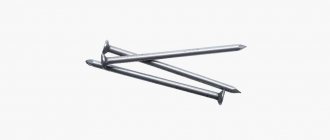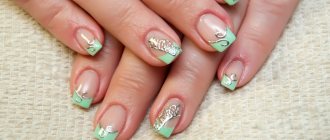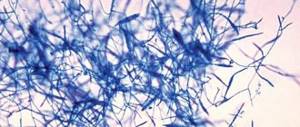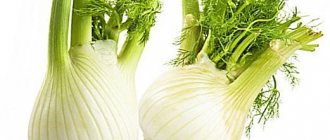Diet for acute cystitis
In case of acute cystitis, bed rest is prescribed and the doctor’s medication prescriptions are followed; The diet includes:
- vegetables and fruits with a diuretic effect (watermelons, zucchini, cucumbers, pumpkin), decoctions of diuretic herbs (bear ears, knotweed, corn silk, diuretic collection);
- fruit drinks and juices from lingonberries and cranberries, which have antiseptic and anti-inflammatory effects. protocyanidins have antimicrobial effects;
- in the first days of severe intoxication (fever, chills , general malaise), it is advisable to give up protein foods (meat, dairy products) and switch to a vegetarian diet - pureed vegetables and fruits, baked apples, fruit and vegetable juices;
- calcium chloride water;
- weak green tea without sugar;
- lean types of meat and fish (the amount of protein is within the physiological norm);
- milk, fermented milk products, cottage cheese, unsalted cheese;
- bran and whole grain cereals;
- olive oil.
Products to be excluded:
- containing essential substances (parsley, celery, radish, garlic, onion, basil, radish, hot seasonings and sauces (horseradish, mustard, mayonnaise, ketchup);
- concentrated broths rich in extractive substances - fish, mushroom and meat;
- sour fruits and vegetables (tomatoes and tomato juice, lemon), with the exception of cranberries;
- salted, pickled, pickled;
- sweet confectionery and sugar;
- salt restriction;
- containing artificial colors;
- with a high content of oxalic acid (sorrel, spinach);
- alcoholic drinks, sweet carbonated drinks, strong tea and coffee.
The diet is adjusted if salts ( oxalates or phosphates ) are detected in repeated urine tests and the pH of the urine changes. When urine is acidified (pH 4.6-5.8), Diet No. 6 , and when alkalization occurs, Diet No. 14 is .
The loss of uric acid salts (urate) is associated with a decrease in pH . The main mechanism of their development is excessive intake of purine from fish, meat and poultry. The most effective treatment in this case is to prescribe a diet similar to the diet for gout . Excluding liver, kidneys, meat broths from the diet, limiting meat, fish, poultry and fats normalizes pH .
If oxalates appear in the urine, it is recommended to reduce the consumption of fats and foods high in oxalic acid: sorrel, spinach, carrots, potatoes, beets, beans, parsley, rhubarb, tomatoes, strawberries, oranges, red grapes, grapefruit, leafy greens, cranberry juice, cocoa , green beans, blackberries, figs, gooseberries, raspberry juice, tea. You should include foods rich in magnesium in your diet - wholemeal bread, cereals. Magnesium salts bind oxalates in the intestines and reduce their absorption.
The precipitation of poorly soluble calcium phosphate occurs when the equilibrium shifts to the alkaline side.
Alkalinization is caused by milk and all dairy products, sweet berries and fruits, legumes, potatoes and many vegetables (except green peas, pumpkins, mushrooms), as well as fruit and vegetable juices. They must be excluded and preference should be given to meat, fish, eggs, cereals, sour berries (red currants, lingonberries), and honey. Meat and fish broths are allowed, and drinks include tea, coffee, and rosehip decoction.
Diet for chronic cystitis
If acute cystitis is treated correctly and in a timely manner, then complete recovery occurs; For some reasons, a chronic form of the disease occurs, which tends to periodically worsen - in this case, you need to constantly monitor your diet, that is, follow a diet:
- with chronic cystitis, you will have to forever abandon (or significantly limit) spicy foods, seasonings and spices. Significantly limit smoked meat and fish products, fried foods in the diet, at least during periods of exacerbation;
- limit vegetables that have an irritating effect: onions, garlic, radishes, sorrel, horseradish, parsley, radish. At least use them according to how you feel. Perhaps this list will expand to include other vegetables and fruits that will cause irritation and aggravate the disease;
- exclude products with dyes and preservatives, sugar substitutes, frozen semi-finished products with preservatives;
- give preference to natural foods, mainly boiled, stewed or baked;
- regularly consume fruit juices, compotes and fruit drinks;
- maintain a drinking regime (1.5-2 liters of liquid);
- periodically conduct preventive courses of taking decoctions of diuretic herbs;
- avoid constipation by eating a lot of vegetables with coarse fiber, cereals, bran and whole grain bread;
- limit alcohol intake.
Tests for cystitis
In order to determine the presence of cystitis, a minimum of effort is required from both the patient and the doctor. It is a little more difficult to identify cystitis in the chronic form and at the very beginning of the disease, but if the symptoms are at their “heightest”, then everything is much simpler.
First, the doctor collects an anamnesis, finds out the medical history with all the details and sends the patient for a laboratory examination.
To establish a diagnosis you will need:
- General urine analysis
- General blood analysis
- Additional urine analysis according to Nechiporenko
In most cases, diagnosis is limited to visiting a gynecologist and taking a general blood and urine test.
To find out additional information you may need:
- PCR diagnostics (for detection of infectious diseases)
- Ultrasound of the genitourinary organs
- Bacteriological culture of urine to check microflora
- Biopsy
- Cystoscopy
- Analysis of vaginal microflora
A general urine test, as a rule, should show the presence of red blood cells, white blood cells, protein, epithelial cells, and a large number of bacteria.
The color of urine is cloudy for everyone. To get a more comprehensive picture, a urine test according to Nechiporenko is prescribed. With its help, you can determine the exact number of cylinders, red blood cells and leukocytes in 1 ml of urine.
The most important thing is for the patient to comply with certain requirements before taking the test. Before collecting urine, you need to perform genital hygiene. First, a small amount of urine is flushed down the toilet, and the rest is filled into a jar. If a woman is taking the test, you need to hold your labia when urinating.
Other tests may be required to determine the specific causative agent of the disease and check the health of other organs.
Nutrition for cystitis in women
As a rule, cystitis and this is explained by the anatomical features of the structure of the urinary organs. In women, the urethra is shorter and wider than in men, which creates more favorable conditions for infection to enter the bladder. Added to this is poor personal hygiene or, conversely, excessive use of intimate care products and frequent hypothermia. It should also be noted the presence of non-infectious factors - hormone deficiency during menopause . Nutrition is no different from the above, and its basic principles remain and must be followed.
For kidney diseases - pyelonephritis (inflammation of the pelvis and calyx of the kidney) and interstitial nephritis - a more strict approach to both treatment and nutritional therapy is required. For these diseases, treatment Table No. 7 and its varieties are prescribed. With these diseases, blood pressure often increases and swelling , so therapeutic nutrition should protect the kidneys and help reduce swelling and pressure. Table No. 7 is characterized by protein restrictions (from 20 g to 80 g per day) depending on the patient’s condition, stage of the disease and kidney function. The features of this treatment table are a significant limitation of salt (from 1.5 g to 6 g) and liquid intake (from 0.7 to 1.1 l). The consumption of sodium (salty) mineral waters is not allowed. Otherwise, the general principles of the diet are similar.
Features of cystitis
As mentioned above, this disease occurs due to inflammation of the mucous membrane of the gallbladder.
This happens for a number of reasons, the main ones being:
- infection with E. coli, staphylococcus, tuberculosis bacteria, etc.;
- severe hypothermia;
- decreased immune system functions;
- long-term illnesses;
- regular stress;
- destruction of intestinal microflora due to prolonged drug treatment;
- disruption or change in hormonal levels.
As a rule, the appearance of this disease can be determined by the following symptoms:
- frequent and, almost always, false desire to go and have a bowel movement;
- every urination is accompanied by unpleasant painful sensations;
- the urine becomes cloudy, and with severe inflammation, bloody discharge is visible in it;
- cutting and burning pain in the lower abdomen.
I would like to note that inflammatory disease of the walls of the bladder most often occurs in women, for the simple reason that the structure of the female body is slightly different from the male one, in particular we are talking about the anatomical structure of the urinary canal.
It is slightly shortened and located close to the anus, which significantly increases the risk of penetration of all kinds of infectious and bacterial media into the bladder. Cystitis is also very common in children, due to frequent hypothermia.
A strong half of our population suffers from cystitis not so often, since infection, as a rule, occurs only when bacteria enter the bladder through the bloodstream.
Diet for cystitis in women and children is the most effective therapy, neglect of which can provoke the occurrence of urethritis, which is no less dangerous to human health. With urethritis, inflammation of the mucous membrane of the walls of the urinary canal occurs. Also, this disease can occur due to poor hygiene.
The diet for cystitis, as well as for urethritis, is identical, since its action is aimed at eliminating the same foci that cause these diseases.
Allowed diet products for cystitis
During a diet for cystitis, soups are prepared in vegetable broth; Cabbage soup made from sour cabbage, vegetable and cereal soups are allowed. They are seasoned with sour cream or butter, but any seasonings and herbs are excluded.
Main courses are prepared from lean meat (usually chicken, beef). It needs to be boiled, stewed with a little water or baked. Stuffed cabbage rolls (but without tomato sauce), stuffed zucchini, and boiled meat casseroles with vegetables and pasta are allowed. Low-fat fish is boiled or baked in milk or sour cream sauce. You can use all cereals and any pasta as a side dish. Porridge is cooked in water, you can eat krupeniki (casseroles) with cottage cheese, fruit pilaf. Among dairy products, milk, yogurt, and low-sour cottage cheese are allowed. Allowed 1 boiled egg per day. Many vegetables are allowed; they can be boiled, stewed, or made into vegetable cutlets in the oven. You cannot add spices to stewed vegetables (you can use sour cream or cream).
Ripe sweet fruits and berries, purees and jelly made from them, jellies and compotes without sugar are allowed. Honey is allowed, and for drinks - rosehip decoction, juices from sweet fruits, weak coffee and green tea, decoctions of cranberries, lingonberries, fruit drinks from these berries.
Table of permitted products
| Proteins, g | Fats, g | Carbohydrates, g | Calories, kcal | |
| Vegetables and greens | ||||
| zucchini | 0.6 | 0.3 | 04.06.2018 | 24 |
| carrot | 01.03.2018 | 0.1 | 06.09.2018 | 32 |
| beet | 01.05.2018 | 0.1 | 08.08.2018 | 40 |
| pumpkin | 01.03.2018 | 0.3 | 07.07.2018 | 28 |
| Fruits | ||||
| watermelon | 0.6 | 0.1 | 05.08.2018 | 25 |
| pears | 0.4 | 0.3 | 10.09.2018 | 42 |
| melon | 0.6 | 0.3 | 07.04.2018 | 33 |
| figs | 0.7 | 0.2 | 13.07.2018 | 49 |
| apples | 0.4 | 0.4 | 09.08.2018 | 47 |
| Berries | ||||
| cowberry | 0.7 | 0.5 | 09.06.2018 | 43 |
| cranberry | 0.5 | 06.08.2018 | 26 | |
| Nuts and dried fruits | ||||
| raisin | 02.09.2018 | 0.6 | 66 | 264 |
| dried apricots | 05.02.2018 | 0.3 | 51 | 215 |
| dried apricots | 5 | 0.4 | 50.6 | 213 |
| dates | 02.05.2018 | 0.5 | 69.2 | 274 |
| Cereals and porridges | ||||
| buckwheat (kernel) | 12.06.2018 | 03.03.2018 | 62.1 | 313 |
| cereals | 11.09.2018 | 07.02.2018 | 69.3 | 366 |
| corn grits | 08.03.2018 | 01.02.2018 | 75 | 337 |
| pearl barley | 09.03.2018 | 01.01.2018 | 73.7 | 320 |
| millet cereal | 11.05.2018 | 03.03.2018 | 69.3 | 348 |
| white rice | 06.07.2018 | 0.7 | 78.9 | 344 |
| Confectionery | ||||
| jelly | 02.07.2018 | 17.09.2018 | 79 | |
| Raw materials and seasonings | ||||
| honey | 0.8 | 81.5 | 329 | |
| sugar | 99.7 | 398 | ||
| sour cream sauce | 01.09.2018 | 05.07.2018 | 05.02.2018 | 78 |
| Dairy | ||||
| milk | 03.02.2018 | 03.06.2018 | 04.08.2018 | 64 |
| kefir | 03.04.2018 | 2 | 04.07.2018 | 51 |
| cream | 02.08.2018 | 20 | 03.07.2018 | 205 |
| sour cream | 02.08.2018 | 20 | 03.02.2018 | 206 |
| curdled milk | 02.09.2018 | 02.05.2018 | 04.01.2018 | 53 |
| acidophilus | 02.08.2018 | 03.02.2018 | 03.08.2018 | 57 |
| yogurt | 04.03.2018 | 2 | 06.02.2018 | 60 |
| Cheeses and cottage cheese | ||||
| cottage cheese | 17.02.2018 | 5 | 01.08.2018 | 121 |
| Meat products | ||||
| boiled beef | 25.08.2018 | 16.08.2018 | 254 | |
| boiled veal | 30.07.2018 | 0.9 | 131 | |
| rabbit | 21 | 8 | 156 | |
| Bird | ||||
| boiled chicken | 25.02.2018 | 07.04.2018 | 170 | |
| turkey | 19.02.2018 | 0.7 | 84 | |
| Eggs | ||||
| chicken eggs | 12.07.2018 | 10.09.2018 | 0.7 | 157 |
| Oils and fats | ||||
| peasant unsalted butter | 1 | 72.5 | 01.04.2018 | 662 |
| corn oil | 99.9 | 899 | ||
| olive oil | 99.8 | 898 | ||
| sunflower oil | 99.9 | 899 | ||
| ghee | 0.2 | 99 | 892 | |
| Non-alcoholic drinks | ||||
| mineral water | — | |||
| lingonberry juice | 0.1 | 10.07.2018 | 41 | |
| green tea | — | |||
| Juices and compotes | ||||
| apricot juice | 0.9 | 0.1 | 9 | 38 |
| carrot juice | 01.01.2018 | 0.1 | 06.04.2018 | 28 |
| pumpkin juice | 9 | 38 |
Healthy foods
As for eating foods, it is recommended to focus on those that have diuretic properties. Below is a list of basic food recommendations that can be consumed if a diet for cystitis in women is indicated.
List of foods that can be consumed:
- Spinach.
- Carrot.
- Cucumbers.
- Zucchini.
- Melon.
- Watermelon.
- Unsalted cheese.
- Cottage cheese.
- Fish.
- Meat.
Completely or partially limited diet products for cystitis
The diet plan for cystitis includes limiting salt and sugar. For cystitis and urethritis , you should exclude all foods and dishes that have an irritating effect on the mucous membrane: hot seasonings, sauces (mayonnaise, ketchup), horseradish, mustard, smoked, salted and pickled foods. Concentrated broths (fish, mushroom, meat, legumes) rich in extractive substances are not allowed.
Pork, duck and goose meat, sausages, smoked meats, and canned food are excluded from meat products. Fried foods should not be consumed. Fatty fish, canned fish and smoked fish are also prohibited.
Horseradish, radishes, celery, onions, garlic, radishes, sorrel and spinach (sources of oxalic acid), and sour varieties of fruits and vegetables (tomatoes and juice from them) are excluded from vegetables. Products with artificial colors and preservatives are not allowed in the diet. Strong coffee and tea, sour juices, sweet carbonated water and alcohol should be excluded from drinks.
Table of prohibited products
| Proteins, g | Fats, g | Carbohydrates, g | Calories, kcal | |
| Vegetables and greens | ||||
| spicy vegetables | 2.8 | 0.5 | 5.3 | 36 |
| vegetables legumes | 9.1 | 1.6 | 27 | 168 |
| canned vegetables | 1.5 | 0.2 | 5.5 | 30 |
| sauerkraut | 1.8 | 0.1 | 4.4 | 19 |
| cauliflower | 2.5 | 0.3 | 5.4 | 30 |
| green onion | 1.3 | 4.6 | 19 | |
| bulb onions | 1.4 | 10.4 | 41 | |
| canned cucumbers | 2.8 | 1.3 | 16 | |
| pickles | 0.8 | 0.1 | 1.7 | 11 |
| radish | 1.2 | 0.1 | 3.4 | 19 |
| white radish | 1.4 | 4.1 | 21 | |
| turnip | 1.5 | 0.1 | 6.2 | 30 |
| celery | 0.9 | 0.1 | 2.1 | 12 |
| asparagus | 1.9 | 0.1 | 3.1 | 20 |
| tomatoes | 0.6 | 0.2 | 4.2 | 20 |
| canned tomatoes | 1.1 | 0.1 | 3.5 | 20 |
| horseradish | 3.2 | 0.4 | 10.5 | 56 |
| garlic | 6.5 | 0.5 | 29.9 | 143 |
| spinach | 2.9 | 0.3 | 2 | 22 |
| sorrel | 1.5 | 0.3 | 2.9 | 19 |
| Fruits | ||||
| apricots | 0.9 | 0.1 | 10.8 | 41 |
| avocado | 2 | 20 | 7.4 | 208 |
| oranges | 0.9 | 0.2 | 8.1 | 36 |
| bananas | 1.5 | 0.2 | 21.8 | 95 |
| lime | 0.9 | 0.1 | 3 | 16 |
| lemons | 0.9 | 0.1 | 3 | 16 |
| tangerines | 0.8 | 0.2 | 7.5 | 33 |
| plums | 0.8 | 0.3 | 9.6 | 42 |
| Berries | ||||
| grape | 0.6 | 0.2 | 16.8 | 65 |
| strawberry | 0.8 | 0.4 | 7.5 | 41 |
| Mushrooms | ||||
| marinated mushrooms | 2.2 | 0.4 | 20 | |
| Confectionery | ||||
| jam | 0.3 | 0.2 | 63 | 263 |
| Chocolate | ||||
| chocolate | 5.4 | 35.3 | 56.5 | 544 |
| Raw materials and seasonings | ||||
| mustard | 5.7 | 6.4 | 22 | 162 |
| ginger | 1.8 | 0.8 | 15.8 | 80 |
| mayonnaise | 2.4 | 67 | 3.9 | 627 |
| ground black pepper | 10.4 | 3.3 | 38.7 | 251 |
| sugar | 99.7 | 398 | ||
| tomato sauce | 1.7 | 7.8 | 4.5 | 80 |
| vinegar | 5 | 20 | ||
| Meat products | ||||
| pork | 16 | 21.6 | 259 | |
| Bird | ||||
| smoked chicken | 27.5 | 8.2 | 184 | |
| duck | 16.5 | 61.2 | 346 | |
| smoked duck | 19 | 28.4 | 337 | |
| goose | 16.1 | 33.3 | 364 | |
| Fish and seafood | ||||
| dried fish | 17.5 | 4.6 | 139 | |
| smoked fish | 26.8 | 9.9 | 196 | |
| black caviar | 28 | 9.7 | 203 | |
| salmon caviar granular | 32 | 15 | 263 | |
| canned fish | 17.5 | 2 | 88 | |
| Oils and fats | ||||
| animal fat | 99.7 | 897 | ||
| cooking fat | 99.7 | 897 | ||
| Non-alcoholic drinks | ||||
| cola | 10.4 | 42 | ||
| coffee | 0.2 | 0.3 | 2 | |
| lemonade | 6.4 | 26 | ||
| Pepsi | 8.7 | 38 | ||
| sprite | 0.1 | 7 | 29 | |
| black tea | 20 | 5.1 | 6.9 | 152 |
| Juices and compotes | ||||
| Orange juice | 0.9 | 0.2 | 8.1 | 36 |
| tomato juice | 1.1 | 0.2 | 3.8 | 21 |
Menu (diet) diet for cystitis
During a diet for cystitis, a menu can be developed based on permitted foods. You need to try to make your diet varied, since all cereals, pasta, meat, fish, cottage cheese, chicken and many (with a few exceptions) vegetables are allowed. Limitations in salt, spices and sugar, of course, affect the taste of the dishes, but they can be varied with neutral milk, cream or sour cream homemade sauces.
Breakfast may consist of milk porridge or porridge with water, stewed vegetables, cottage cheese, soft-boiled eggs or an omelet with vegetables, weak green tea, weak coffee with milk or juice. For lunch, prepare vegetable soups, cabbage soup, and beetroot soup. Borscht is not recommended due to the content of tomatoes or tomato paste.
For main courses, choose steamed cutlets, dumplings, meatballs with rice, cabbage rolls with sour cream sauce, boiled chicken, meat or fish, and as a side dish - pasta, stewed vegetables, porridge. For dinner you can prepare cottage cheese casserole, pasta with unsalted cheese or cottage cheese, cereals with cottage cheese, and juices. Do not forget to drink a lot of rosehip decoction, fruit drinks, dried fruit compotes and juices from non-acidic berries throughout the day.
Sample menu for the week
Guided by the list of permitted and healthy dishes for cystitis, you can independently create a treatment menu. It’s better to prepare it for a week at once - it’s more convenient to purchase the necessary products and calculate the nutritional value of the diet.
You should try to include a sufficient amount of light protein-containing dishes (1.0–1.5 g of protein per 1 kg of weight) and vegetables in your diet. As for fats, it is not advisable to either overload the diet with them or exclude them. This is the most important building material for endocrine organs in women, but it is better to remove coarse fats from the menu.
Therapeutic diet for cystitis for a week.
Monday
| Breakfast | Rice porridge with butter, meat cheese, tea with milk |
| Lunch | Fresh apples, juice |
| Dinner | Noodle soup with chicken broth, quenelles with mashed potatoes, compote |
| Afternoon snack | White crackers, rosehip infusion |
| Dinner | Carrot zrazy with cottage cheese, apple pie, lingonberry leaf decoction |
Tuesday
| Breakfast | Buckwheat porridge, chicken breast, tea with milk |
| Lunch | Curd pudding, glass of kefir |
| Dinner | Borscht with sour cream, boiled potatoes, beef stroganoff, fruit jelly |
| Afternoon snack | Biscuits, watermelon, juice |
| Dinner | Boiled fish with vegetables, green tea |
Reviews and results of the diet for cystitis
This diet for cystitis can be called monotonous and tasteless, since all seasonings, sauces are excluded and salt is limited; In view of this, it is difficult to withstand it for a long time, as noted in the reviews. However, everyone notes a rapid improvement in acute cystitis (along with drug treatment). Conversely, when trying to expand the diet ahead of time, patients developed pain in the lower abdomen and dysuric disorders returned.
- “... Previously, there were often relapses of chronic cystitis, but now there has been nothing for a year, since I follow a diet, do not get hypothermic, and I am prescribed Monurel twice a year for 2 weeks. The hardest part of all this is to follow a diet, but it is very important. It has been tested more than once - after feasts with alcohol and spicy dishes I feel worse”;
- “... I have been suffering from cystitis since pregnancy. When I kept to the diet and didn’t freeze, everything was fine. But if you get a little too cold or swim in the sea, everything starts all over again. She was treated in combination (antibiotics, diet). I liked the drug Uroprofit and took it for months. Plus diet helps a lot for prevention. It’s not difficult for me to do it, because due to gastritis and constant heartburn I didn’t eat anything spicy or fried”;
- “... I cooked it for myself when I had cystitis and the whole family ate it - they just added salt and pepper to taste. This way I didn't have to cook separately and it wasn't difficult. I liked casseroles with cottage cheese, baked apples, zucchini and chicken casseroles. It’s a shame to say, but due to illness, I expanded my knowledge of cooking and added new dishes to it.”
Treatment of cystitis with folk remedies
Read also: Flat feet - symptoms, degrees, prevention and treatment of flat feet
Many, many people have been helped by folk remedies in the treatment of cystitis. Let's look at some of them.
Warming up
Before warming up, it will be good if you steam your legs, and then, after wrapping yourself up, apply a heating pad to the bladder area.
Salt. Heat table salt in a frying pan and pour into a sock. Apply it like a heating pad to your lower abdomen and crawl under the blanket.
Buckwheat, millet, rice. Do the same as with salt.
Water bottle. Fill a plastic bottle with hot water, apply it to your lower abdomen and wrap yourself up.
The warming process should be pleasant, so if the heating pad is very hot, place a cloth under it.
Baths
With sea salt. Fill the bath with water and add sea salt.
With essential oils. Add 2 drops each of eucalyptus, sandalwood and juniper oils to the bath water and sit for 10 minutes.
Juniper essential oil is contraindicated during pregnancy.
With chamomile. Brew 3-4 tbsp in boiling water. spoons of chamomile and pour into a bowl, stirring with warm water. Sit in this bath until it cools down, but remember that the water should not be too hot. You can make the same bath with calendula or add calendula to chamomile.
With iodine. Fill a bowl of hot water and pour in some iodine. Sit over the bath for 10-15 minutes.
With milk. Heat the milk to such a state that you can sit in it, take it until it cools down.
Decoctions
Chamomile. Pour 1 tbsp. spoon of chamomile 1 glass of boiling water. Take 20 ml 3 times a day.
Read also Arterial hypertension (Hypertension). Causes, symptoms and treatment of hypertension
St. John's wort. 1 tbsp. Pour 1 cup of boiling water over a spoonful of St. John's wort. Boil for 10-15 minutes and strain. Take 50 ml 3 times a day.
Sage. 1 tbsp. Pour a spoonful of medicinal sage into 1 cup of boiling water and boil for 30 minutes in a water bath. Cool and add hot water if necessary until you get 1 cup of liquid. Take 50 ml 3 times a day 30 minutes before meals.
Lingonberry leaves. Pour 1 cup of boiling water over 2 teaspoons of lingonberry leaves and boil for 10-15 minutes. Let the broth steep for at least 2 hours. Strain and take 100 ml 4 times a day before meals.
Yarrow. Brew 2 teaspoons of yarrow with 1 cup of boiling water. Let stand for 1 hour and strain. Take a quarter glass 4 times a day.
